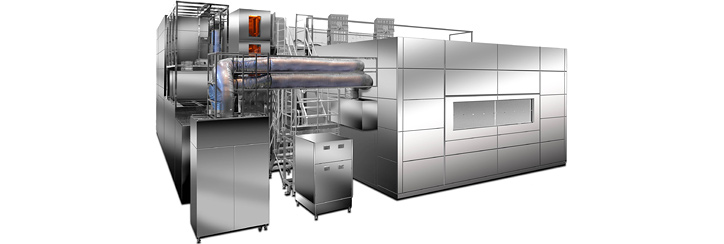Nikon Receives the Prime Minister's Prize of the Fourth Monodzukuri Nippon Grand Award
February 6, 2012
Five engineers from Nikon Corporation (President: Makoto Kimura, Chiyoda-ku, Tokyo) engaged in the development of a product for Nikon's LCD Equipment Division of Precision Equipment Company won the Prime Minister's Prize as part of the Fourth Monodzukuri Nippon Grand Award.
About the Monodzukuri Nippon Grand Award
The Monodzukuri Nippon Grand Award is an awards program recognized by the Prime Minister, which was established in August 2005 through collaboration among the Ministry of Economy, Trade and Industry, the Ministry of Education, Culture, Sports, Science and Technology, the Ministry of Health, Labor and Welfare and the Ministry of Land, Infrastructure, Transport and Tourism, and is held once every two years.
With a view toward sustaining the growth of Japan's industries and culture as well as the steady succession and further nurturing of "monodzukukri"* that has been significantly contributing to the enrichment of the lives of the Japanese, the program recognizes those who are particularly commendable, and the Prime Minister's Award is given to those who are recognized as excelling the most in each category.
- *monodzukukri is the art of making goods.
Summary of the Prize-Winning Development
Title:
Development of Multi-Lens Array Type Exposure Equipment that Enables High Volume Manufacturing of Large LCD Panels
The multi-lens array method is a technology developed for projection optical system in LCD exposure equipment that expose and print patterns for LCD panels onto a glass plate. It is a revolutionary technology that enables printing of a large area in a single scan exposure with high accuracy by arraying multiple projection lenses with high accuracy and by developing and incorporating a self-calibration system that smoothly stiches the patterns exposed by each of the lenses.
Since the conventional equipment has small exposure fields, it was difficult to manufacture large size panels in volume. This method enables a single scan exposure of a large area, thereby accommodating ever increasing glass plate sizes as well as realizing efficient production of high grade, large size panels.
The method was first incorporated in the equipment for the 3.5th generation plate size* in December 2000 and has gone through multiple improvements to accommodate increasing glass plate sizes. It is now employed in the first and only equipment in the world that can accommodate the 10th generation plate size*. Its productivity has improved by a factor of 12 compared to the original product.
- *The 3.5th generation plate size and the 10th generation plate size are 680mm x 880mm and about 3m x 3m, respectively.
Significance of Winning this Award
The exposure equipment employing the multi-lens array method was made commercially viable not only by the projection lenses but also by the technologies that resolved various challenges associated with the increasing size of glass plates, such as control of large stages weighing several tons with submicron accuracy and dealing with post exposure pattern distortions.
This award is a tremendous validation of Nikon's unsurpassed optics technology and ultra-precise control technology. The efficient high volume production of LCD panels by the exposure equipment equipped with this method has promoted the rapid spread of large size TVs, laptop PCs and LCD monitors and has contributed to the enhancement of our lives and advancement of the information society.
Precision Equipment Company will continue to enhance its product competitiveness and pursue development of various technologies to contribute to the information society.

LCD Scanner for 10th Generation Plate with the Multi-Lens Array Method
The information is current as of the date of publication. It is subject to change without notice.
